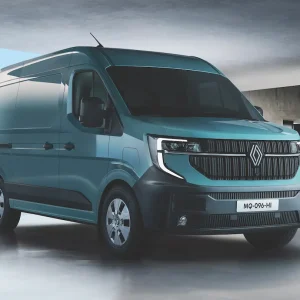Vauxhall is proud of its long history in the UK. It started its domestic operations in 1903 in the south London district from which it took its name before moving to its current home of Luton in 1905. It started building vans there in 1987.
The manufacturer seldom misses an opportunity to flag-up the fact that it is the nation’s leading producer of LCVs. It’s a position it has held since Vivaro production started in 2001, and in this regard 2014 will be a key year for the brand with the launch of the second-generation medium van.
The Luton plant will make all the models for the UK and mainland Europe – where the vehicle will be badged Opel Vivaro – bar the niche high-roof version, which will be assembled in
Renault’s Sandouville factory near Le Havre. The Luton plant, Vauxhall explains, is not set up to build high-roof models. That derivative will be produced alongside the Renault Trafic, the Vivaro’s sister model, which represents a departure since the French company’s previous- generation model was built in Luton, together with a smaller number of the Nissan Primastar, which shares the same DNA. Mike Wright, the site’s plant manager, admits that under the current arrangement 31% of the factory’s output bears the Renault badge. This will change next year.
Vauxhall’s boss, Duncan Aldred, says: “We will only build Vauxhall [vans] here so it will have a volume impact.” But, since Opel Vivaro
models destined for 18 European markets will be built at Luton, he points out: “We are going across Europe with Opel.”
Vauxhall has invested €95m (£82m) in upgrading the Luton factory for the new Vivaro with almost half of this sum spent on developing a new bodyshop in what was previously a store warehouse. The work included relaying the entire floor with concrete over a two-month period. The manufacturer has also spent €112m (£96m) on the supply chain network including €34m (£29m) in the UK. It claims 40% of parts for the new van will be UK-sourced with more than half of these coming from within a 100-mile radius of the plant, which has a 1400-strong workforce.
Aldred says Vauxhall will tailor production volumes of the new Vivaro to fit demand, which he claims is growing in the UK but declining elsewhere in Europe.
Hundreds and thousands
The facility churned out 53,000 vans last year and has assembled 22,000 in the first half of 2013. Production is currently running at 198 units a day, and in July the Luton plant reached a milestone, when the 900,000th medium-sized van based on the Vauxhall Vivaro/Renault Traffic/Nissan Primastar platform rolled off the assembly line and into service with the AA.
The AA has ordered 356 Vivaros in a deal worth £4m, representing 75% of its fleet renewal for 2013, according to president Edmund King. All the vans come equipped with fuel-saving Ecoflex technology.
“It is essential for our patrols that their vehicles are safe, practical, reliable and economical,” King says.
Tony Rich, AA patrol of the year, who took the keys of the milestone Vivaro, stresses the importance of accessibility for vans that are often called out to breakdowns on motorways, and says a tailgate, rather than twin rear doors, is essential for safety. In the medium van sector the Vivaro, along with the Renault Trafic and Ford Transit, is one of just three vans available with the feature. He also cites the 1300mm floor-to-roof rear door as being ideal for facilitating access to the AA’s compact recovery trailer.
More derivatives
King says the next-generation Vivaro will be among the vans the AA considers in the future. Vauxhall, though, is keeping its cards close to its chest when it comes to revealing details of the new model, but Aldred does disclose that more derivatives will be offered than are available with the present vehicle. This would follow the trend set by the current Movano, which is offered in 56 bodystyles compared with the previous generation’s 13 (since 2009, the Luton plant has housed a conversion centre that has to date produced 30,000 vehicles). The next Vivaro will also be bigger than the current edition.
No date, other than “mid-2014”, has been set for production to start, and the company has yet to confirm whether the vehicle will appear at next April’s Commercial Vehicle Show in Birmingham.
Aldred suggests the Vivaro’s core market will remain with SMEs following a strategic move to target retail buyers, but he stresses that more emphasis will be placed on winning business from large corporate fleets.
“We aim to conquest sales in all segments,” he says.
End of an era for Ford at Southampton
In July Ford closed down its Southampton factory and the Dagenham stamping plant that supplied it with parts for the production of small and medium Transits.
The Southampton facility produced around 28,000 vans in each of the past three years having stepped up from 21,000 in 2009. Previously, however, the plant had produced about 70,000 units annually having started making Transits in 1972. Production of all Transits has now switched to Ford’s plant in Kocaeli, Turkey, which was already building 80% of the vans sold in Europe.





